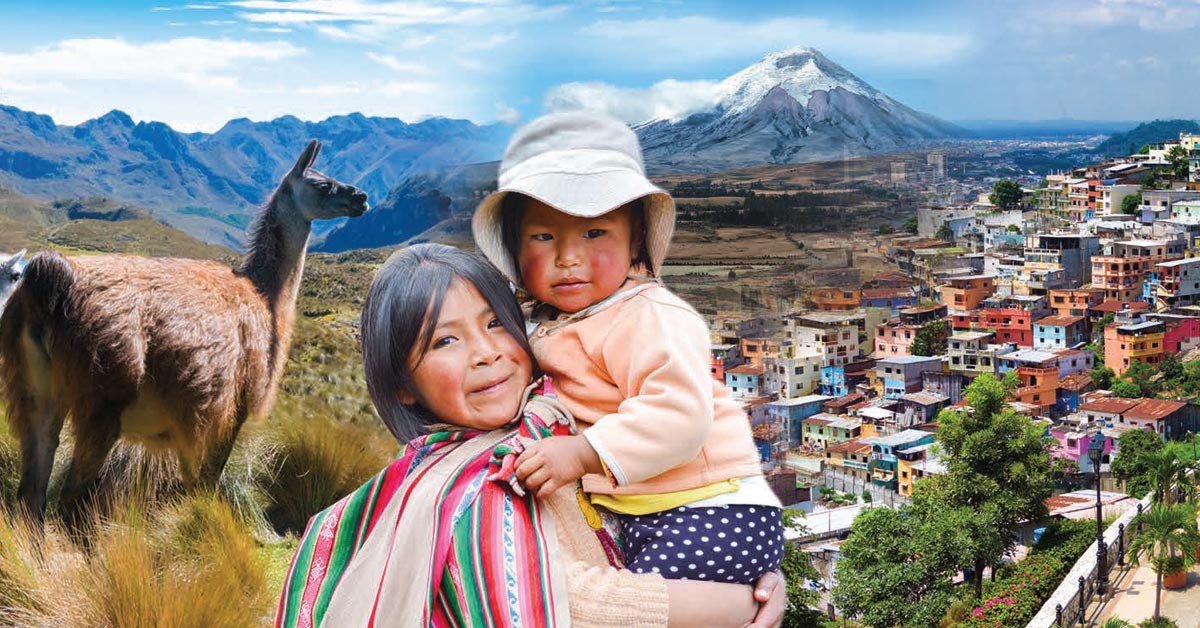Ecuador is a South American nation of 16.7 million people that has diverse geography — including a portion of the Andes Mountains, the Amazon River basin and the Pacific Ocean to the west. Ecuador is situated on the Ring of Fire, which has made it susceptible to several deadly earthquakes in the past. Nearly two-thirds of the population lives in urban areas and the country is expected to grow to about 19.5 million inhabitants by 2030, according to Brittanica.com.
The World Bank reports that Ecuador’s gross domestic product (GDP) grew at an average annual rate of 4.3 percent from 2006 to 2014, although GDP growth fell to 1.4 percent in third-quarter 2018. The poverty rate also declined by 15 percentage points from 2006 to 2014, and much of the country’s growth was due to high oil prices and foreign investments. Ecuador’s economy relies heavily on mining, agriculture, fishing and oil exports. It is one of a handful of countries that uses the U.S. dollar as its currency, adopting it in 2000 after its former currency (the sucre) collapsed.
The Heritage Foundation’s index of economic freedom scores Ecuador poorly in relation to other countries due to a lack of government integrity and judicial effectiveness. The foundation recommended that Ecuador reduce its deficit — which stood at 5.9 percent as of 2017 — and a “hugely bloated” public sector that has restricted growth for private companies.
This past January, Fitch Ratings downgraded the nation’s credit outlook from stable to negative, while affirming its long-term default ratings for both local- and foreign-currency issuers to B-minus. Financing conditions have tightened due to rising U.S. interest rates and less liquidity from Ecuador’s central bank. China financed a $900 million loan to Ecuador this past December, but that only covers roughly 10 percent of the South American nation’s external-financing needs, Fitch estimated.
According to a report from Santander Bank, almost 80 percent of foreign investments in Ecuador target the oil sector, but those investments declined from $1.3 billion in 2015 to $606 million in 2017. Access for business investors in Ecuador is challenging due to complex labor regulations, although recent legislative reforms have spurred foreign interest in the nation’s mining sector.
A 2018 report from real estate services company JLL said that the capital city of Quito, which has a population of about 2.4 million, has had a “historically quiet” office market compared to regional peers such as Lima, Peru and Bogota, Colombia. Ecuador’s office sector has experienced a boom in recent years, however, with the vacancy rate falling to 8 percent in 2017. JLL expects more modest growth in 2019 as supply dries up, which should continue to push down the vacancy rate while putting upward pressure on rent prices.








